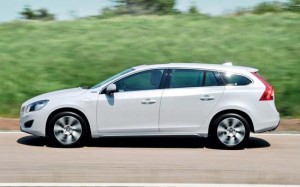|
Car manufacturers aren’t required to stress the green credentials (or, more generally, the lack of them) in their adverts. So despite the consensus view among scientists that burning fossil fuels is bad for our planet (Lord Lawson, opposing views are available) copywriters don’t do much to promote the eco-friendliness of the vehicle. They have very little to say, too, about you saving a lot of money by driving a car with low emissions, even though high petrol prices are one of the consumer concerns of our time. In the past 18 months of so writing this blog I have seen very little to match these two example. (Click here and here.) Driving a low emissions car does a lot more than not put CO2 into the atmosphere. Fewer emissions mean less NOx, Hydrocarbons and Particulates, key contributors to poor air quality, particularly in urban areas. In the sort of research that even the climate change sceptics couldn’t dispute, poor air quality is linked, at least in part, to the early deaths of an estimated 200,000 people,. It is potentially also contributing to 15-30% of asthma cases in children. (Volvo believes it’s time to educate drivers of a car’s complete emissions picture rather than just CO2 in isolation, and is campaigning on this issue.) There is another benefit for the driver of a car whose output is less than 100 g of CO2 per kilometre, which is the unofficial virtuous threshold. Drive a car with CO2 output below this level, and you evade the congestion charge in London, currently the only city in the UK where one is applied. (The cars mentioned below are well below that figure.) Electric cars remain an extreme minority interest, although many more people may aspire to own one. Even spotting one is enough to elicit an excited tweet from people. Most drivers are likely to be locked into the perception clamp of range anxiety, cost, and even worries about having to replace costly batteries, for some time. There is another factor, the dreadful state of the economy, which must have deterred many more people from a new car purchase. And yet comfortable and relatively expensive new cars will be purchsed in the UK over the period of the unfolding economic crisis. (Note that the unfolding environmental crisis was still be there, well after the economy stabilised.) Here are three cars buyers might care to look at, and that includes people who are in charge of business car fleets, as well as people in executive posts who are able to choose their car within a certain price range. These part-electric cars, in the showrooms in 2012, should satisfy comfort requirements of the employee, and cost significantly less to run. Their mileage is ultra low, comparted to standard models, and, crucially, they have a petrol engine to overcome range anxiety. The Volvo V60 Plug-in Hybrid will have an average economy of around 150mpg, a figure arrived at when you combine the figures for when the driver uses it in battery (which can be charged from the mains) mode and conventional diesel engine mode. Driven on electricity only (topped up at home) it will do up to 32 miles; when the battery is empty, the diesel engine kicks in, extending the car’s range by an additional 700 miles. This happens automatically, helping the car to get an average of 143mpg fuel consumption. Competing hard against it is likely to be the Toyota’s new Prius Plug-in Hybrid, which lets drivers use electric power only for a range of 16.4miles (whereafter the petrol engine kicks in), with fuel efficiency of 143mpg calculated between electric vehicle and hybrid vehicle driving modes. The third vehicle is Vauxhall’s new Ampera, which could be “the car of the decade”, according to motoring writer Quentin Wilson in the Daily Mirror. “It does 150mpg, has a range of 350 miles [with a range extending petrol engine] and, if you run it on electric only, it’ll cost you buttons.” It can be driven as an electric car at all times – as US TV host Jay Leno managed, clocking up over 11,000 miles in the Chevrolet Volt (essentially the US version of the Ampera) on battery only, without needing to fill up the petrol tank for the range-extending engine. When the battery runs out of charge, after about 50 miles, the petrol generator simply starts up and powers the electric motor. As an an extended-range electric vehicle, it works in the opposite way to a hybrid. Hybrids like the Toyota Prius are always predominantly powered by a petrol engine. With the Ampera, the idea is that drivers use electric power only for as much of the time as they can. The petrol engine does not power the wheels directly – it acts as a generator for the electric propulsion system. It will provide a total range of around 310 miles. If you need to gofurther than 310 miles, then you just fill the tank with more petrol. Prices are uncertain, but are likely to be below £30,000 for all three. If your job gives you a car with it, you might not feel too badly disadvantaged these days of austerity driving a car like the above, instead of the executive’s car of choice the BMW or the Audi. Or until BMW and Audi come up with models offering similar economy.
|

